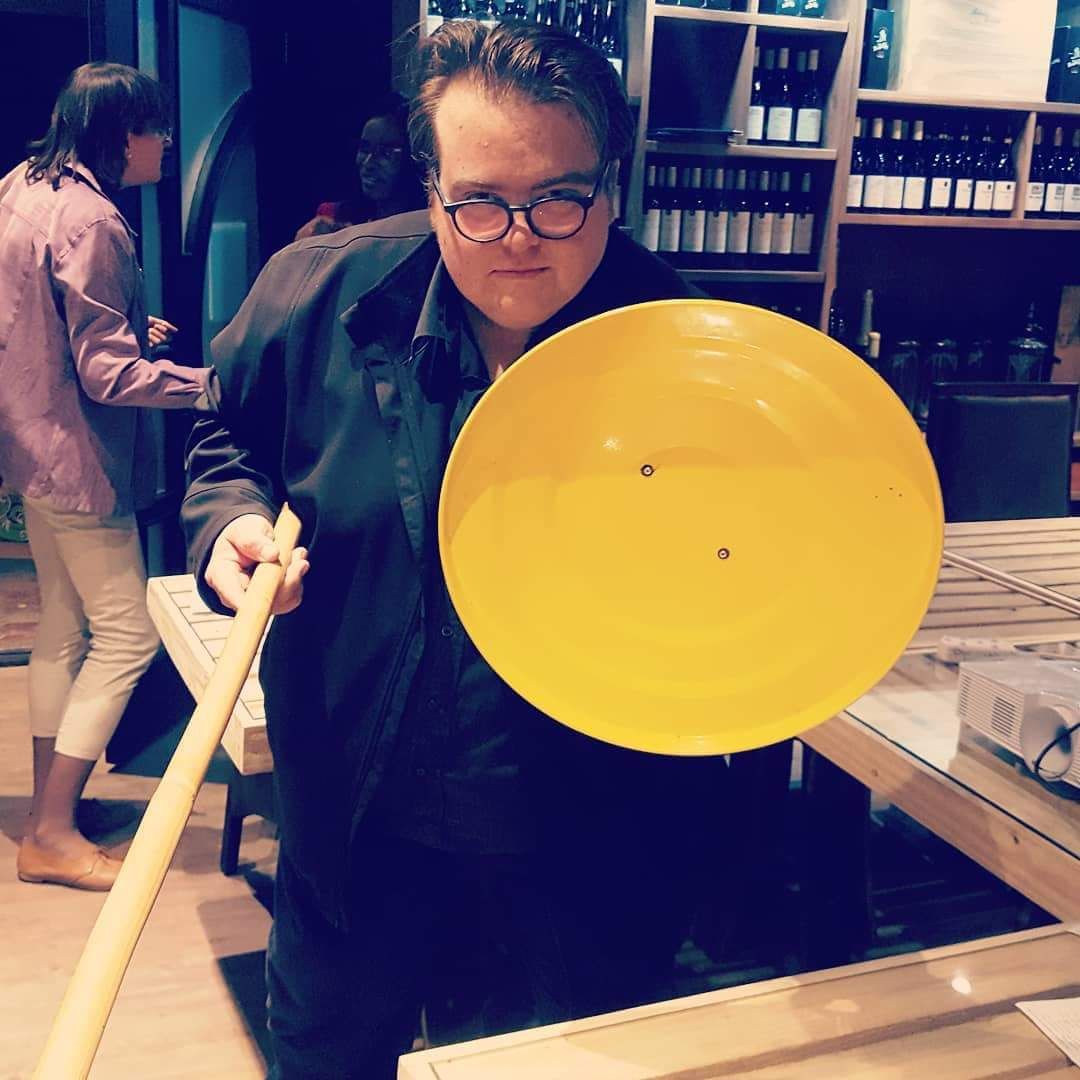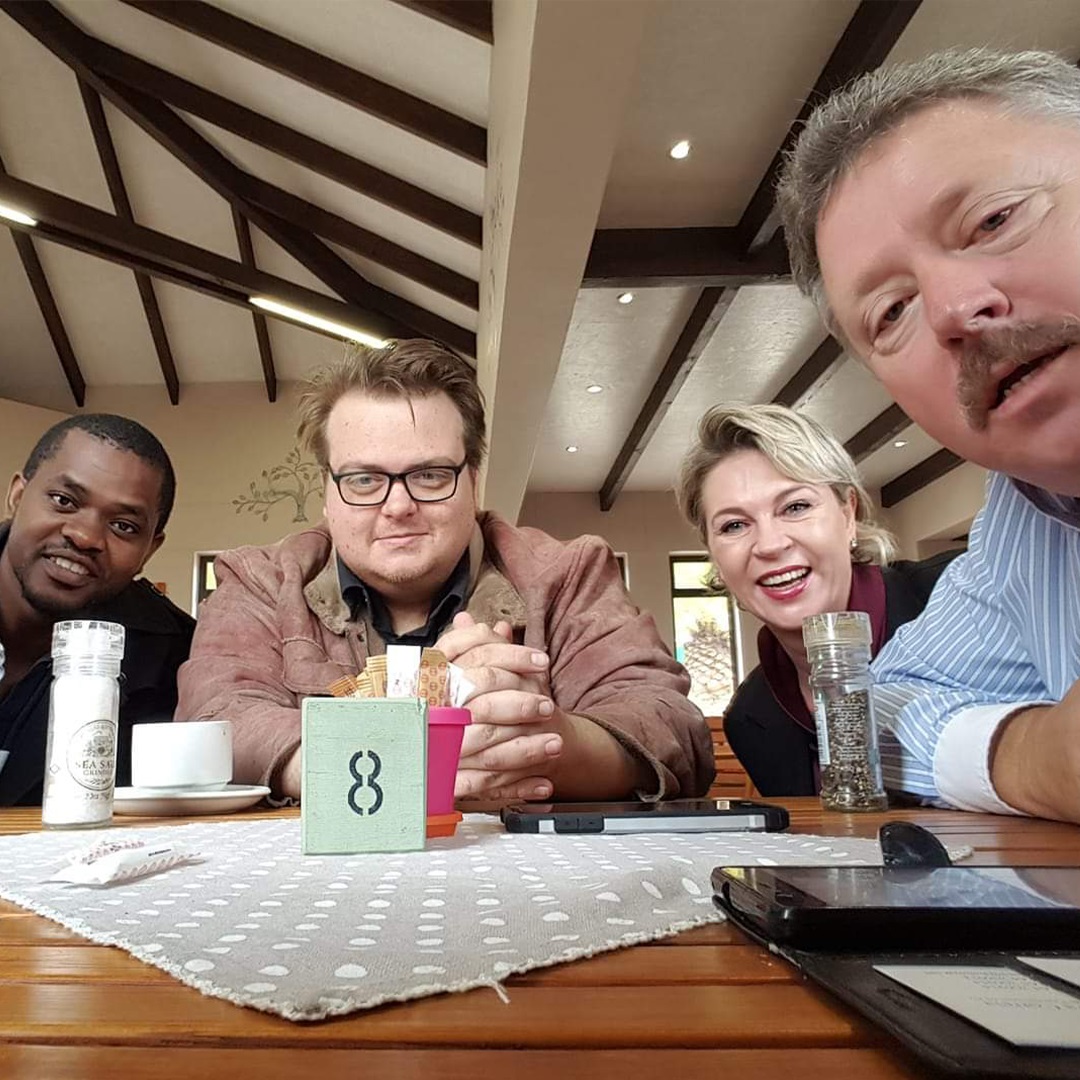An expression of your thought process
A different approach
Creative thinking means more ideas, better solutions, and exploring unique paths.
Henriette Lamprecht – He can’t draw, his singing brings people to tears for all the wrong reasons and he has zero fashion sense. Brandt von West, a sought-after figure in business and leadership development as well as a creativity specialist, admits he never actually thought of himself as a creative person. However, as he started looking at things differently and seeing how different ideas, philosophies, techniques, tools, and everything else can be incorporated into his own life, he found that “things got easier, doing business got easier, and I got better at everything I did”.
It also meant he could help people and companies develop new ideas or explore different avenues to reach their objectives.
“The more I started exploring creative thinking, the more I saw how many people and companies aren’t using their creativity to drive success.”
Brandt started working with small companies to help them find ways to get things done without the ability to throw money at their problems to make them go away or open new doors.
He admits creativity is a broad term and can have several meanings. Personally, he sees creativity as the expression of one's thought process.
“In order to develop to become more creative, we need to think more creatively. Creative thinking (also known as design thinking, evaluative thinking, and creative problem solving, amongst others) is about looking at the same thing as everybody else and coming up with more ideas, better solutions, and new, novel, and unique paths to explore.”
This, he admits, is incredibly valuable in an increasingly busy and ever more complicated world.
“If everyone thinks the same, then somebody isn’t thinking.”
Everyone is born with the capacity to think creatively. An artist didn’t come up with Adobe Photoshop, and an accountant didn’t create MS Excel," says Brandt. It’s a collaboration between being creative and analytical - what we commonly refer to as being right-brained and left-brained.
People can also apply their creative thinking in other areas of their life or career. You can be creative in sport, business, and every other vocation you can think of, he explains.
“The biggest problem is that we get educated out of creative thinking. A child doesn’t need to learn how to look at the world in an interesting way - creativity is a natural process.”
The further we go into our educational journey, the more we are forced to conform to one idea, one solution, and soon we adopt a fixed mindset rather than exploring the endless possibilities available to us, says Brandt.
“Many entrepreneurs are initially very creative because they have to be. The more established and older the company gets, the easier it is for them to stagnate. They stop growing because they stop exploring possibilities.”
There are many tools, tips, and techniques to boost your creative thinking, he explains. The first thing you can do is expand your comfort zone. Start taking a different route to work or school, try a new cuisine, or explore a different culture.
“The biggest thing preventing us from moving up in life and achieving more is that we get too comfortable. Our brains form expected patterns for our behaviour and just start cutting out the usual stuff. Soon you just hop in the car, and ta-da - you’re at work but can’t remember what happened along the way. These shortcuts in thinking can be dangerous because you’re missing out on so many opportunities to enhance your life, your business, or your relationship with others.”
Expanding your comfort zone is not the same as jumping out of your comfort zone, he warns. Set an attainable goal for yourself - something that's specific enough to accomplish within a reasonable time frame and moves you (just a smidge) outside of your norms.
“You can try setting yourself a target to talk to five strangers every day for the next five days. Ask them questions, get to know them and soon you'll start getting perspectives from people you never thought of. This leads to you increasing your insights and thinking.”
Brandt uses a tool called SCAMPER, created by Dr. Bob Eberle, which is useful to generate ideas for new products and services by encouraging you to think about how you could improve existing ones. "SCAMPER" stands for "substitute, combine, adapt, modify, put to another use, eliminate, and reverse".
“It is a quick, easy, and accessible form of creative brainstorming for both left- and right-brained individuals. You use the tool by asking questions about existing products, using each of the seven prompts above. These questions help you come up with creative ideas for developing new products or services, and for boosting the ones you already have.”
Educational development is his passion, says Brandt, and every time he steps into a classroom or training centre, he tries to think about what can be done to make the lesson more interesting and get students to engage with the subject matter. This can range from using puppets to drawing pictures.
For him, a creative life means he’s never done learning, continuously exploring and getting excited about stupid little things like numbers that make a palindrome, meeting new people, asking questions, and sometimes taking on more than he can handle.
“It also means I realise I’ll never achieve perfection. I’ll never know exactly what to say or do. I’ll never get everything 100% right, but that doesn’t stop me from trying. To me, pursuing excellence is better than actually reaching it.”
Every day is another opportunity to learn different things, try something different, and help someone get “unstuck” in their way of thinking, says Brandt.
“That doesn't mean there are no bad days. It means I'm aware that I can think better and not get stuck in the bad days.” - [email protected]; www.thinkvonwest.com
It also meant he could help people and companies develop new ideas or explore different avenues to reach their objectives.
“The more I started exploring creative thinking, the more I saw how many people and companies aren’t using their creativity to drive success.”
Brandt started working with small companies to help them find ways to get things done without the ability to throw money at their problems to make them go away or open new doors.
He admits creativity is a broad term and can have several meanings. Personally, he sees creativity as the expression of one's thought process.
“In order to develop to become more creative, we need to think more creatively. Creative thinking (also known as design thinking, evaluative thinking, and creative problem solving, amongst others) is about looking at the same thing as everybody else and coming up with more ideas, better solutions, and new, novel, and unique paths to explore.”
This, he admits, is incredibly valuable in an increasingly busy and ever more complicated world.
“If everyone thinks the same, then somebody isn’t thinking.”
Everyone is born with the capacity to think creatively. An artist didn’t come up with Adobe Photoshop, and an accountant didn’t create MS Excel," says Brandt. It’s a collaboration between being creative and analytical - what we commonly refer to as being right-brained and left-brained.
People can also apply their creative thinking in other areas of their life or career. You can be creative in sport, business, and every other vocation you can think of, he explains.
“The biggest problem is that we get educated out of creative thinking. A child doesn’t need to learn how to look at the world in an interesting way - creativity is a natural process.”
The further we go into our educational journey, the more we are forced to conform to one idea, one solution, and soon we adopt a fixed mindset rather than exploring the endless possibilities available to us, says Brandt.
“Many entrepreneurs are initially very creative because they have to be. The more established and older the company gets, the easier it is for them to stagnate. They stop growing because they stop exploring possibilities.”
There are many tools, tips, and techniques to boost your creative thinking, he explains. The first thing you can do is expand your comfort zone. Start taking a different route to work or school, try a new cuisine, or explore a different culture.
“The biggest thing preventing us from moving up in life and achieving more is that we get too comfortable. Our brains form expected patterns for our behaviour and just start cutting out the usual stuff. Soon you just hop in the car, and ta-da - you’re at work but can’t remember what happened along the way. These shortcuts in thinking can be dangerous because you’re missing out on so many opportunities to enhance your life, your business, or your relationship with others.”
Expanding your comfort zone is not the same as jumping out of your comfort zone, he warns. Set an attainable goal for yourself - something that's specific enough to accomplish within a reasonable time frame and moves you (just a smidge) outside of your norms.
“You can try setting yourself a target to talk to five strangers every day for the next five days. Ask them questions, get to know them and soon you'll start getting perspectives from people you never thought of. This leads to you increasing your insights and thinking.”
Brandt uses a tool called SCAMPER, created by Dr. Bob Eberle, which is useful to generate ideas for new products and services by encouraging you to think about how you could improve existing ones. "SCAMPER" stands for "substitute, combine, adapt, modify, put to another use, eliminate, and reverse".
“It is a quick, easy, and accessible form of creative brainstorming for both left- and right-brained individuals. You use the tool by asking questions about existing products, using each of the seven prompts above. These questions help you come up with creative ideas for developing new products or services, and for boosting the ones you already have.”
Educational development is his passion, says Brandt, and every time he steps into a classroom or training centre, he tries to think about what can be done to make the lesson more interesting and get students to engage with the subject matter. This can range from using puppets to drawing pictures.
For him, a creative life means he’s never done learning, continuously exploring and getting excited about stupid little things like numbers that make a palindrome, meeting new people, asking questions, and sometimes taking on more than he can handle.
“It also means I realise I’ll never achieve perfection. I’ll never know exactly what to say or do. I’ll never get everything 100% right, but that doesn’t stop me from trying. To me, pursuing excellence is better than actually reaching it.”
Every day is another opportunity to learn different things, try something different, and help someone get “unstuck” in their way of thinking, says Brandt.
“That doesn't mean there are no bad days. It means I'm aware that I can think better and not get stuck in the bad days.” - [email protected]; www.thinkvonwest.com







Kommentaar
Republikein
Geen kommentaar is op hierdie artikel gelaat nie